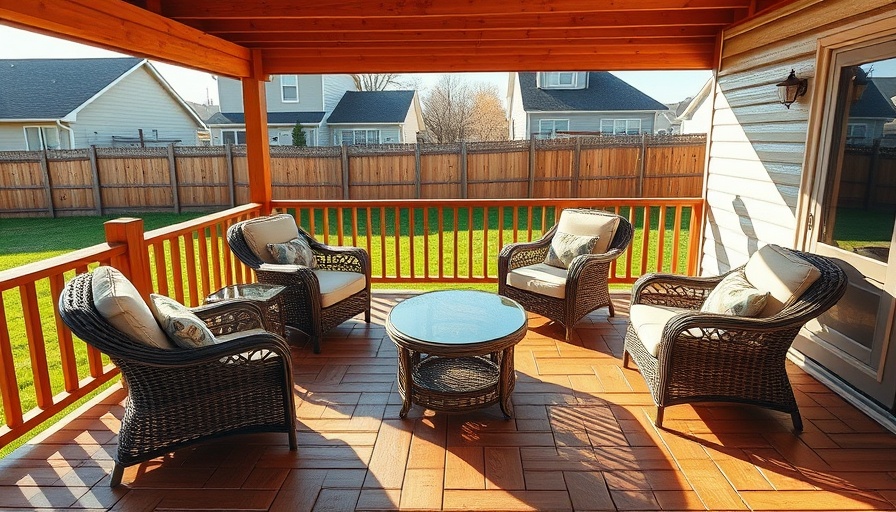
Master the Art of Upholstery Cleaning
Upholstered chairs are a staple of comfort and style in our homes, but maintaining them can often feel like an uphill battle. The key to keeping these household heroes looking their best lies in effective cleaning techniques that banish stains and refresh fabrics. Today, we delve into how to clean your upholstered chairs like a pro, transforming your approach to maintaining your beloved furniture.
Why Regular Cleaning Matters
Most homeowners underestimate the importance of regular cleaning for upholstered furniture. Dust, allergens, and spills can accumulate over time, impacting your health and the overall aesthetic of your home. Studies have shown that regular cleaning can reduce allergy symptoms and enhance your living space's comfort. Investing a little time in chair maintenance might mean the difference between drab and fab!
Getting Ready: What You'll Need
Before you embark on your cleaning mission, gather all necessary supplies. Here’s a brief checklist:
- Vacuum with upholstery attachment
- Fabrics-friendly cleaner
- Soft-bristle brush
- Lint roller
- White cloths for spot cleaning
- Water for rinsing
Keeping these tools handy will streamline your cleaning process and ensure you have everything you need when tackling those pesky stains.
Step-by-Step Cleaning Process
Let’s break down the cleaning process into manageable steps:
- Vacuum First: Start by thoroughly vacuuming the chair to collect loose debris. Use the upholstery attachment to ensure a deep clean, especially in crevices.
- Spot-Test Cleaners: Always conduct a spot test on an inconspicuous area before applying any cleaner. This ensures that the product you choose is safe for your fabric.
- Apply Cleaner: Follow the manufacturer’s instructions for your chosen cleaner. Use a white cloth to apply the cleaner and gently scrub the fabric using circular motions.
- Rinse: If required, use a damp cloth to remove excess cleaner residue. Be careful not to oversaturate the fabric.
- Drying: Air dry the chair naturally or use a fan to speed up the drying process. Avoid direct sunlight to prevent fading.
By adhering to these easy steps, you can vastly improve the appearance of your upholstered chairs.
Why You Should Consider Professional Cleaning
While DIY cleaning can be effective, there are occasions when professional services are worth the investment. Upholstery cleaning experts utilize specialized equipment and solutions that can provide a deeper clean, prolonging the life of your furniture and preserving its color vibrancy. If your chairs are heavily stained or if you simply wish to achieve a showroom finish, reaching out to professionals might be your best bet.
Tips for Preventing Future Stains
Once your chairs are clean and sparkling, it’s crucial to maintain their condition. Here are some practical tips to keep stains at bay:
- Use fabric protectants that create a barrier against spills.
- Incorporate slipcovers in high-use areas to guard your upholstery.
- Practice a ‘no food and drink’ policy for your upholstered chairs.
- Regularly dust and vacuum to prevent dirt buildup.
Following these preventative measures will make your cleaning efforts last longer, keeping your chairs looking great between cleanings.
Fun Fact: Upholstered Chairs Throughout History
Did you know that upholstered chairs have roots dating back to the early Middle Ages? Originally reserved for the wealthy, these chairs symbolized comfort and status. Today, upholstered chairs have become a staple in homes around the world, and their variety is staggering, from modern minimalism to classic grandeur.
Engage with Our Community
Are you inspired to tackle your upholstered chairs? Join our community of home enthusiasts who share tips, success stories, and DIY tricks! Cleaning and caring for your home should be a fun journey, not a chore!
 Add Row
Add Row  Add
Add 



Write A Comment